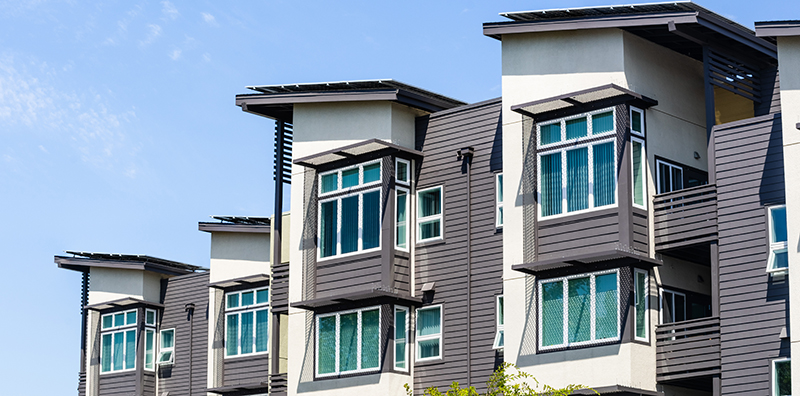Multifamily rent growth for the U.S. overall was up 7.9% year-over-year during the third quarter of 2021, as Sun Belt markets continued to drive the recovery.











Multifamily rent growth for the U.S. overall was up 7.9% year-over-year during the third quarter of 2021, as Sun Belt markets continued to drive the recovery.
The pandemic accelerated the adoption of hybrid and work-from-home (WFH) setups across industries and geographies. While WFH adoption initially posed as a headwind for large multifamily properties in gateway markets, new tenants and urban dwellers are returning to the cities, bringing signs of optimism for rental demand.
Las Vegas remained one of the nation’s top multifamily performers in the third quarter of 2021, with among the highest rent growth among large markets. After a brief pause at the onset of the pandemic, investors once again flooded into the market as sales volume neared a pace to reach 2019’s record high. The market also rose to the top of our Arbor-Chandan Large Multifamily Opportunity Matrix in 2021.
The Q3 2021 Small Multifamily Investment Trends Report finds that the asset class may be less impacted by work from home trends than larger properties as fewer small multifamily tenants can work remotely. See how the small multifamily sector performed by reading the full report.
Reliability of Small Multifamily Tenant Base Fuels Recovery Our quarterly report on the current and emerging small multifamily investment trends features data and research from Chandan Economics. The report reviews the state of the market, identifying trends in underwriting, financing, cap rates, valuation and more. In the report, you’ll learn how small multifamily properties differ from larger properties, and the forces driving their investment performance. Key Findings: An analysis of work from home trends finds that small multifamily properties may be less affected than larger properties because fewer tenants can work remotely. Small multifamily cap rates held at 5.2% in the third quarter, effectively unchanged from last quarter. The refinancing share of originations rose as investors locked in rates ahead of potential monetary tightening and expected rate rise. Asset prices rose 2.9% from a year earlier and 7.7% over pre-pandemic highs. Complete the form to instantly access the full report!
Our 2021 Top Markets for Large Multifamily Investment Report ranks the top 50 U.S. metros based on eight key categories. Presented in the Arbor-Chandan Large Multifamily Opportunity Matrix, the top-ranking markets scored high in factors like labor market performance, renter demographics, population growth and COVID-19 response.
Our annual report on the top markets for large multifamily investment features data and research from Chandan Economics. Analyzing eight key categories, the report offers the Arbor-Chandan Large Multifamily Opportunity Matrix, ranking the top 50 U.S. metros based on their performance metrics. The top-ranking markets scored high in factors like labor market performance, renter demographics, population growth and COVID-19 response. Key Findings: Las Vegas topped the Opportunity Matrix rankings, largely due to its work from home (WFH) resiliency and recovering tourism industry. Four metros in Florida jumped significantly in the rankings, reflecting the state’s continued strong labor market performance despite the pandemic. The Sun Belt region generally ranked well across the Matrix factors, despite experiencing higher COVID-19 case counts per capita. Complete the form to instantly access the full report!
Affordable Housing Garners Greater Attention in Post-Pandemic Environment This new report series from Arbor and Chandan Economics explores the many facets of affordable housing and the major trends shaping the market. It’s a critical time to focus on affordable housing, as pandemic-related headwinds and longstanding structural forces have impacted housing affordability. Key Findings: The pandemic’s economic effects combined with surging rent prices have strained low-income renters. Reduced business income due to the pandemic-related downturn may decrease the value of Low-Income Housing Tax Credits (LIHTC), requiring developers to seek alternative financing sources. The share of mortgages utilizing the 4% LIHTC remained elevated through second-quarter 2021, reflecting the continued attractiveness of rehabbing versus ground-up development. Complete the form to instantly access the full report!